

The Apollo Lunar Module (LM), originally designated the Lunar Excursion Module (LEM), was the lunar lander spacecraft that was flown between lunar orbit and the Moon's surface during the United States' Apollo program. It consisted of two stages (descent and ascent). It was the first crewed spacecraft to operate exclusively in the airless vacuum of space, and remains the only crewed vehicle to land anywhere beyond Earth.
Structurally and aerodynamically incapable of flight through Earth's atmosphere, the two-stage Lunar Module was ferried to lunar orbit attached to the Apollo command and service module (CSM), about twice its mass. Its crew of two flew the Lunar Module from lunar orbit to the Moon's surface. During takeoff, the spent descent stage was used as a launch pad for the ascent stage which then flew back to the command module, after which it was also discarded.
Lunar Module Eagle (LM-5) is the spacecraft that served as the crewed lunar lander of Apollo 11, which was the first mission to Land humans on the Moon. It was named after the bald eagle, which was featured prominently on the mission insignia. It flew from Earth to lunar orbit on the Command Module Columbia, and then was flown to the Moon on July 20, 1969, by astronaut Neil Armstrong with navigational assistance from Buzz Aldrin. Eagle's landing created Tranquility Base, named by Armstrong and Aldrin and first announced upon the module's touchdown.
Eagle’s Flight:
Eagle was launched with Command Module Columbia on July 16, 1969, atop a Saturn V launch vehicle from Launch Complex 39A, and entered Earth orbit 12 minutes later.
Eagle entered lunar orbit on July 19, 1969. On July 20, Neil Armstrong and Edwin “Buzz” Aldrin entered into the LM and separated it from Command Module Columbia. Eagle landed at 20:17:40 UTC on July 20, 1969, with 216 pounds (98 kg) of usable fuel remaining.
After the lunar surface operations, Armstrong and Aldrin returned to the Lunar Module Eagle on July 21, 1969. At 17:54:00 UTC, they lifted off in Eagle's ascent stage to rejoin Michael Collins aboard Columbia in lunar orbit. >P>After the crew re-boarded Columbia, Eagle was abandoned in lunar orbit. The location of its impact on the Moon's surface during an orbit decay is unknown, and there is evidence that Eagle may still be in orbit.
Facts and General Characteristics of the Lunar Module Eagle:
Manufacture: Grumman
Designer: Thomas J. Kelly
Operator: NASA
Crew: 2
Launch Mass: 33,500 lbs. (15,200 kg) standard, 36,200 lbs. (16,400 kg) extended
Dry Mass: 9,430 lbs. (4,280 kg) standard, 10,850 lbs. (4,920 kg) extended
Length: 23 ft. 1 in. (7.04 m)
Diameter: 13 ft. 10 in. (4.22 m), without landing gear
Width: 31 ft. (9.4 m), landing gear deployed
Facts and General Characteristics of the Model:
The model depicts the LM Eagle on the lunar landing site called Tranquility Base with astronauts Neil Armstrong on the outside and Buzz Aldrin inside.
Manufacturers: Revell, Inc. (The History Makers Series) and Revell-Monogram, Inc.
Scale: 1/48
Parts: 89 (including base, flag, astronauts, plastic windows and foil)
Decals: 5
Height: 6.5”
Width: 8.6”
Hours to build and paint: 19
Problems/Mistakes:
1. The Revell model did not include some key parts, so I purchased another kit (Monogram SnapTite) just for those parts.
2. I used superglue to attach the two small windows, and the superglue combined with the oil on my fingers created fog on the windows.

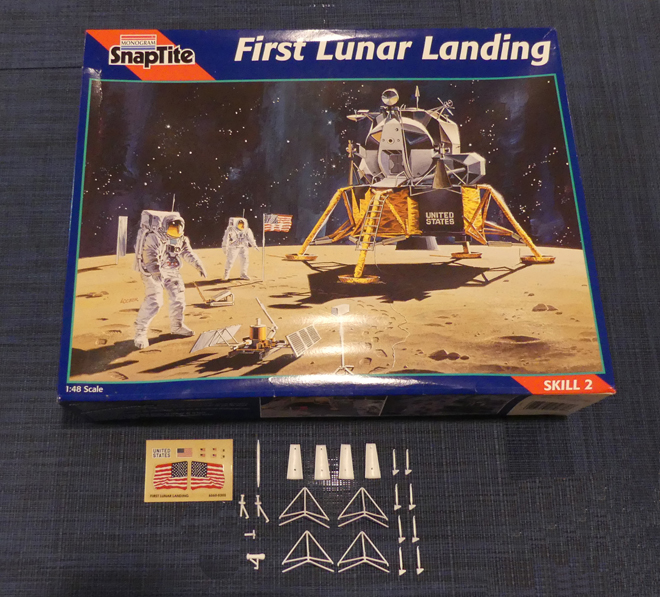
This is the second kit I bought. It's a Revell-Monogram kit and some parts are more detailed and some parts are less detailed than the Revell kit. It also comes with a much larger base, two walking astronauts and several pieces of equipment used for experiments, etc. The parts shown are the only parts I used from this kit. I only used the "United States" and one small flag decal from this kit.
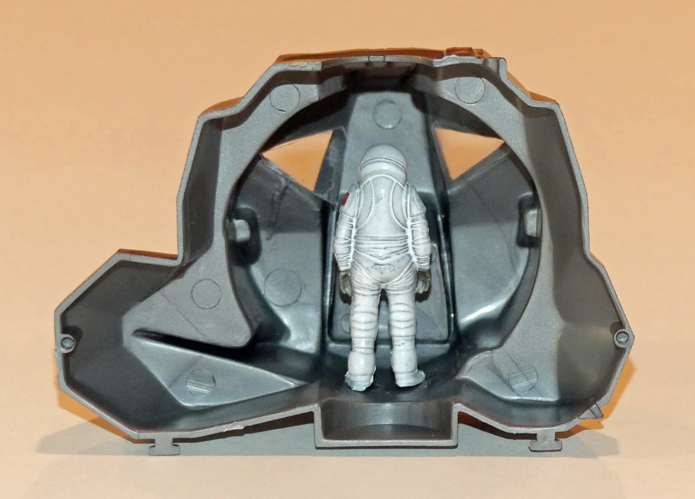
Edwin "Buzz" Aldrin inside the ascent stage.
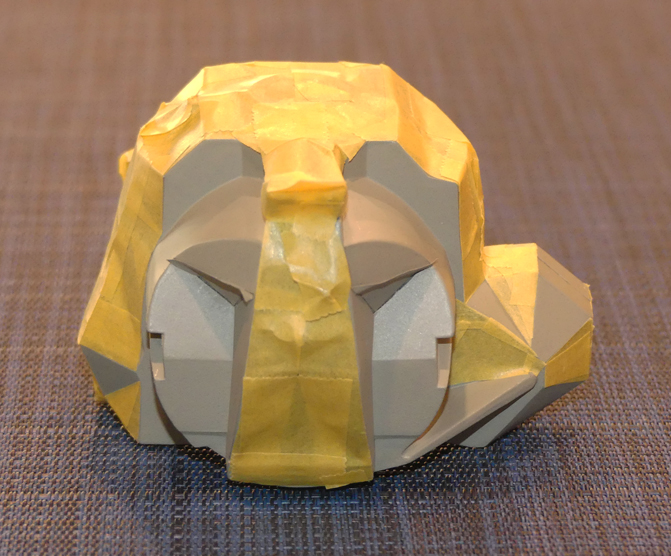
Ascent stage masked and ready for black paint.
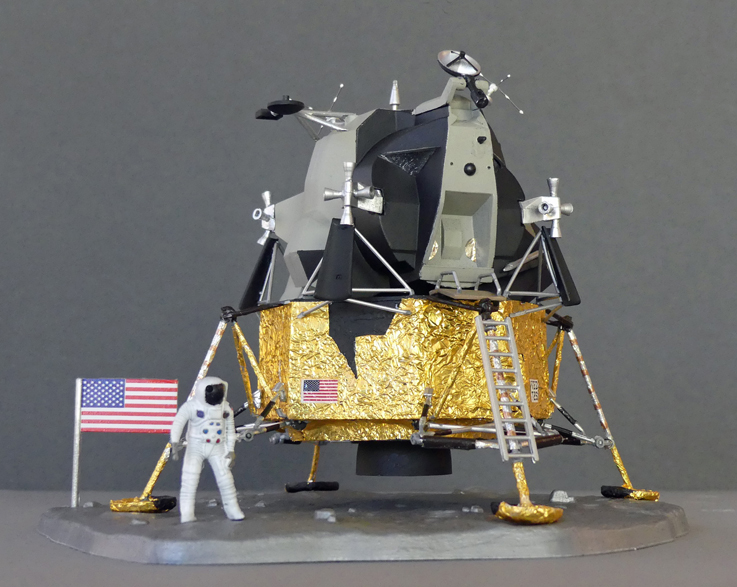
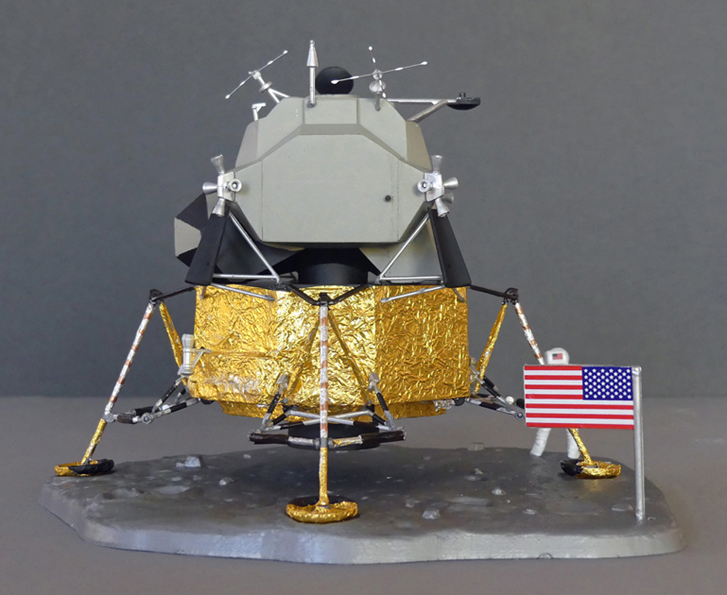
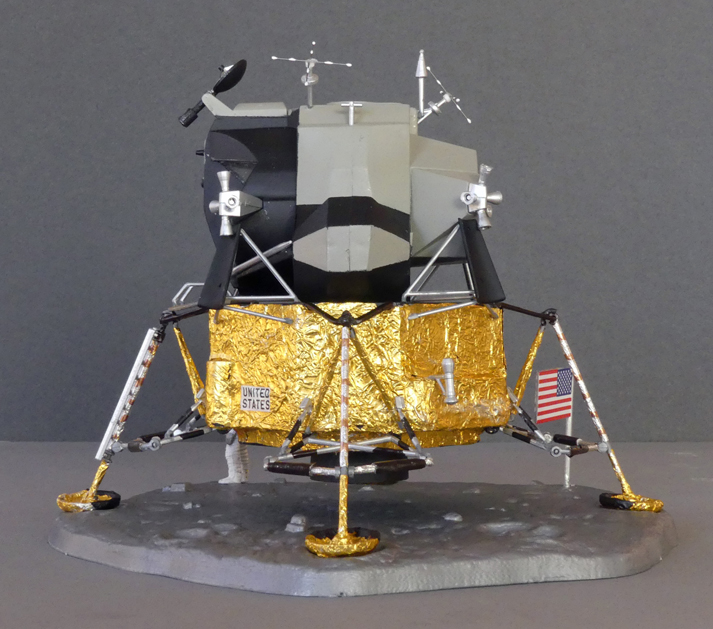
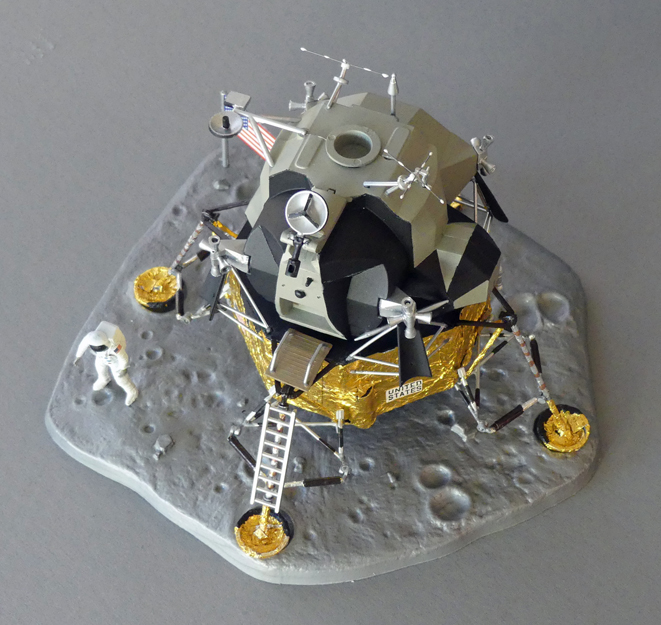
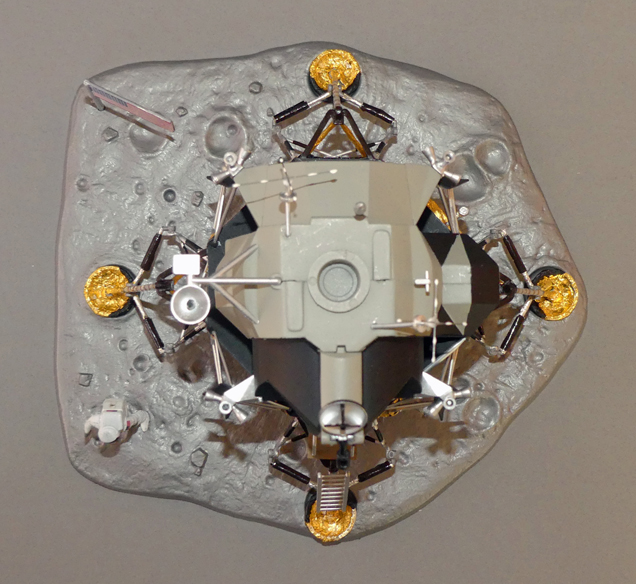
This base is about half the size of the base that comes with the Revell-Monogram kit which also has footprints. Since I'm hurting for display space, I prefer this base.
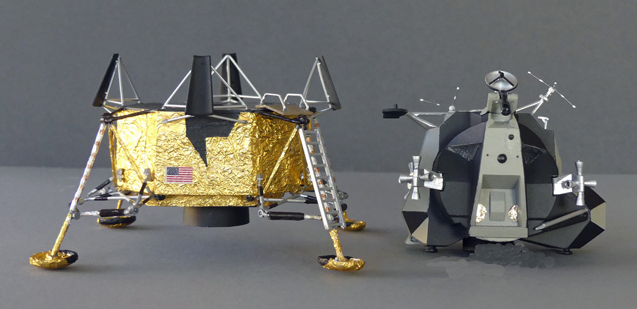
The decent sage on the left stayed on the moon. The ascent stage on the right was abandoned in lunar orbit and is either still in orbit or it crashed on the lunar surface.

Neil Armstrong. The first kit didn't come with tiny decals for his space suit, so I copied NASA, Apollo 11 and flag patches from online and shrunk them way down to a few millimeters. Edwin "Buzz" Aldrin Jr is inside the ascent module. You can't really see him through the small windows.